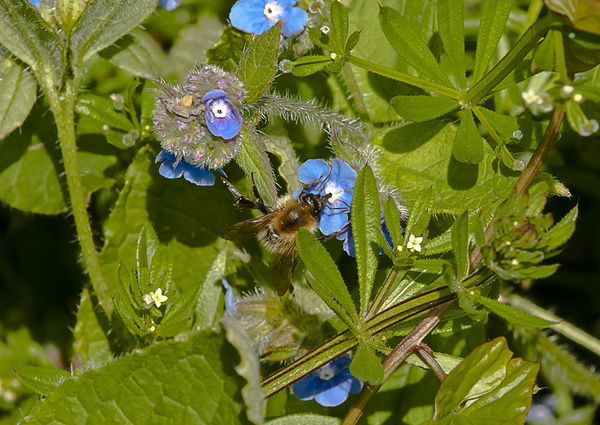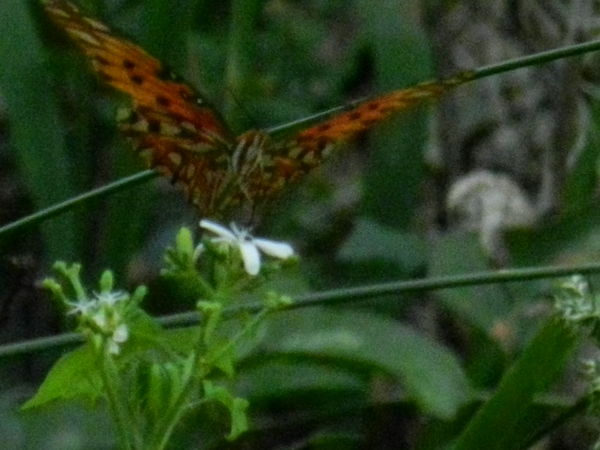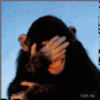Grainy
Aug 6, 2012 12:03:42 #
Aug 6, 2012 12:07:49 #
Aug 6, 2012 12:35:28 #
Aug 6, 2012 12:41:29 #
erfrench
Loc: Jersey, C.I. UK
ISO, The higher the ISO the more grainy the photo will be..In digital it is known as noise!
Aug 6, 2012 13:29:24 #
Your ISO was 3200 and your noise reduction was turned off and you may have cropped it too much as well. No worries better luck next try.
Aug 6, 2012 14:20:51 #
gordnanaimo wrote:
Didn't crop this one. Need to check and see if the noise reduction is turned off. Still learning! Thanks for the tips!Your ISO was 3200 and your noise reduction was turned off and you may have cropped it too much as well. No worries better luck next try.
Aug 6, 2012 14:21:22 #
erfrench wrote:
Thank you for the help!ISO, The higher the ISO the more grainy the photo will be..In digital it is known as noise!
Aug 7, 2012 01:44:44 #
Digital zoom on a coolpix (or any other camera with exaggerated specs) will give trashy results.
This plus:
High ISO
underexposure
so-called high resolution...
Nothing can save you from disaster.
Extrapolation of pixels is your worse enemy (especially in this case)
This plus:
High ISO
underexposure
so-called high resolution...
Nothing can save you from disaster.
Extrapolation of pixels is your worse enemy (especially in this case)
Aug 7, 2012 07:40:24 #
smsouthers wrote:
What makes a picture so grainy looking?
I agree with the above posts. I would suggest the following tests, if you have not done something similar already.
1. Set your camera to ISO to 100. (in most circumstance this will mean no visible grain except at very large magnification.)
2. Set your camera to aperture f8 (big depth of field) and auto everything else. Let the camera take charge of exposure (speed).
3. Auto focus on a static large object: tree, wall, building, but be sure that everything important is on the same plane.
4. In ideal circumstances, shoot before 10 am or after 3pm to avoid overhead sunlight. Take your test photographs with the sun over you shoulder.
5. Check the first results on your computer. What you see is the best that your camera can do without your help. Do you like what you see? Is everything sharp? Is the exposure as good as you would like?
6. Repeat the exercise but increase the ISO to 400, then 800, again at 1600 until you reach the maximum ISO the camera will allow. (You may like to include a card in the picture with the ISO speed displayed on it to prevent confusion later.) At some point the ISO speed will produce unwanted noise. This is your top setting in good light. That same setting will produce more noise as the light gets dimmer.
7. Now you know what's happening when noise appears and you know when it is likely to appear. Of course you can reduce noise with a good photo editing program, but it's better to eliminate it in the first place.
You can vary the above: work out tests for depth of field for various lens you own, best aperature setting for a lens for the best result (usually around f8).
All this work will ensure that you know your camera, what it is capable of, and how you can improve the reults by taking charge of ISO setting, aperature setting, shutter speed, and focussing yourself.
The difference between an amateur photographer and a point and shoot happy snapper is that the photographer knows his/her equipment and how to use it. Maybe we'll talk about composition, lighting, rim effects, night photography, etc., later. Good luck.
Aug 7, 2012 10:26:06 #
glojo
Loc: South Devon, England
When we take our pictures we want to use the camera whenever the opportunity presents itself and I have seen amazing pictures with high-ish ISO settings and those that keep screaming to only use low ISO setting might be guilty of not keeping up with the times but.......
Without knowing the conditions and why you took the picture I would suggest anyone from any number of options caused your downfall. ISO of 3200 is not something you should be looking at with a shutter speed of 1/1500sec. unless there is lots and lots of light. That is an exceptionally fast shutter speed and will demand light..
The camera compensated for the lack of light by cranking up the ISO setting, so yes the ISO setting can DEFINITELY be criticised but the speed wanted the light.. So was it the chicken or the egg?? :)
If you had opted for a much slower shutter speed the camera may well have set a more acceptable ISO setting?
I do not own the Coolpix camera so if you manually set the ISO then I blame you :) (humour) for setting such a high ISO.
If you just set the shutter speed then I blame you :) for setting such a high speed in possibly inadequate lighting for the situation?? That in turn may well have caused that very high ISO setting which still might not have given enough light.
It is all about compromise :)
Good luck,
John the happy snapper
Without knowing the conditions and why you took the picture I would suggest anyone from any number of options caused your downfall. ISO of 3200 is not something you should be looking at with a shutter speed of 1/1500sec. unless there is lots and lots of light. That is an exceptionally fast shutter speed and will demand light..
The camera compensated for the lack of light by cranking up the ISO setting, so yes the ISO setting can DEFINITELY be criticised but the speed wanted the light.. So was it the chicken or the egg?? :)
If you had opted for a much slower shutter speed the camera may well have set a more acceptable ISO setting?
I do not own the Coolpix camera so if you manually set the ISO then I blame you :) (humour) for setting such a high ISO.
If you just set the shutter speed then I blame you :) for setting such a high speed in possibly inadequate lighting for the situation?? That in turn may well have caused that very high ISO setting which still might not have given enough light.
It is all about compromise :)
Good luck,
John the happy snapper
Aug 7, 2012 17:36:20 #
Shakey wrote:
Goodness, I will have to print this one out. It is approaching dark, won't be able to even try this today, but I am anxious to see what happens. I appreciate all the help! quote=smsouthers What makes a picture so grainy l... (show quote)
Aug 7, 2012 18:06:59 #
glojo
Loc: South Devon, England
smsouthers wrote:
Goodness, I will have to print this one out. It is approaching dark, won't be able to even try this today, but I am anxious to see what happens. I appreciate all the help!
Good luck but you will be baffling yourself with lots of data.
I have been looking at some very nice pictures taken of birds with an ISO of 3200, they are not mine so I cannot post them but this image is mine and although it is nothing to write home about,the ISO is 1000 and is it grainy? 1/500th f13
I dread to think about all the combinations you will have to go through to try and figure out what is right and what is not but to me nothing is black or grey :)

Aug 7, 2012 18:22:08 #
glojo wrote:
quote=smsouthers Goodness, I will have to print ... (show quote)
Great shot in wonderful light, you know your camera, but look at the result smsouthers got. Not in the same ball park as your work. Let him do the tests and he'll learn what his camera can do, and what he can do with his camera under any conditions.
Aug 7, 2012 18:35:58 #
glojo wrote:
This picture to me is not grainy, rather nice picture! quote=smsouthers Goodness, I will have to print ... (show quote)
Aug 7, 2012 18:37:09 #
Shakey wrote:
I will get there, some day! He is a she, Sharon is my name! lol quote=glojo quote=smsouthers Goodness, I will h... (show quote)
If you want to reply, then register here. Registration is free and your account is created instantly, so you can post right away.





